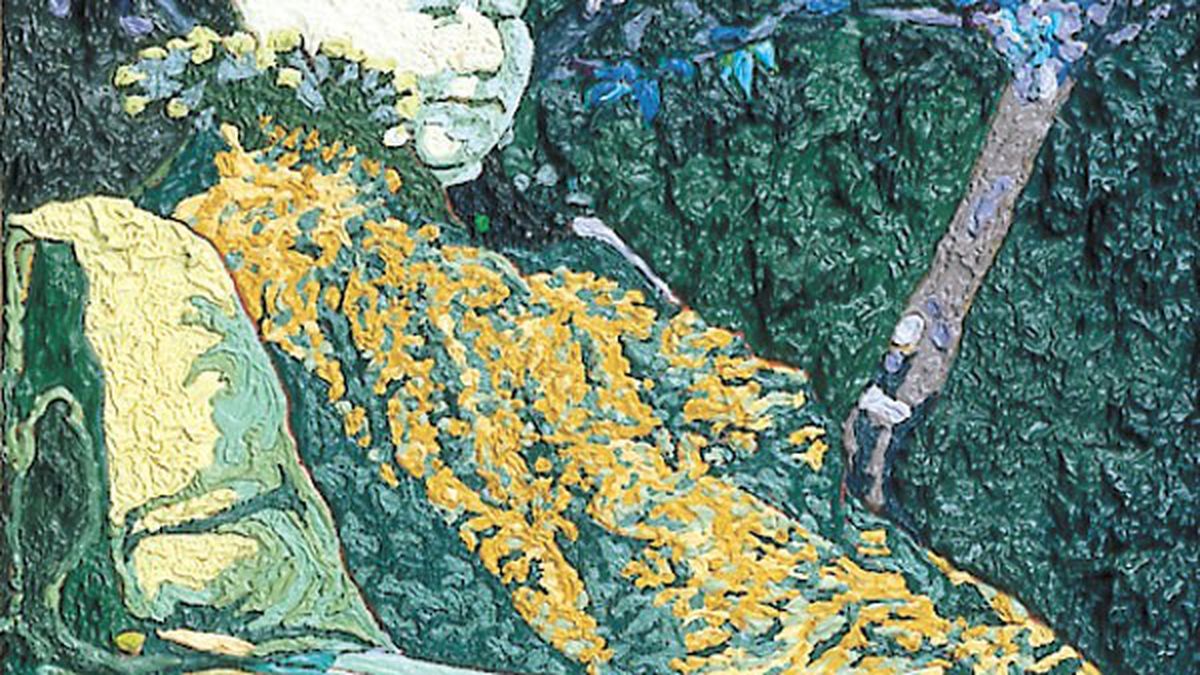In 1922, archaeologist Howard Carter first peered into the dark tomb
of Tutankhamen and famously said that he saw wonderful things. Anyone
ever permitted into a major museum’s storerooms knows that
treasure-trove euphoria, and will enjoy the Berkeley Art
Museum‘s current show, Galaxy: A Hundred or So Stars Visible to
the Naked Eye, which features treasures, familiar and unfamiliar,
from BAM’s huge permanent collection. Director Lawrence Rinder
(himself a former BAM curator), Curatorial Associate Stephanie
Cannizzo, and Senior Curator for Asian Art Julia White
selected 156 objects from the 14,000 or so pieces, spanning five
centuries, acquired since the museum’s 1963 founding by its first
director, Peter Selz. Since, in storage, artworks are grouped
not chronologically, but according to the demands of conservation and
logistics, “unexpected, often jarring, and occasionally illuminating
juxtapositions” are always evident (think of Chirico’s inanimate
objects and their surprising encounters); the show preserves the best
of those “fortuitous association[s],” replacing the
historical/geographical distinctions that museums usually employ with
aesthetic affinity as organizing principle. Orlik’s 1901 etching of
German zoologist Ernst Haeckel, for example, and Rembrandt’s 1656
etching of silversmith Jan Lutma pair nicely, as do Ensor’s atypically
abstract “Seascape” (1881) and Rothko’s adjacent “Number 207” (1961),
or Léger’s oil “Figure: Contraste de Formes” (1912) and
Camargo’s wood assemblage “Relief no. 31-C” (1969). Disparate artworks
thus enter into dialogue with each other, and art becomes a continuum
rather than the midden implied by avant-gardist extremism, with each
cultural layer burying and superseding its predecessors. Not all the
stars are always visible, but they remain twinkling in the firmament,
even if obscured by weather or planetary bodies (including ours).
A few highlights — yours may vary. Drawings, prints, and
photos: Raimondi’s engraving “Two Fauns Carrying a Child in a Basket”
(1510-20); Blake’s 1825 engravings “With Dreams upon my Bed” and
“Behold Now Behemoth Which I Made With Thee”; Goya’s “Disparate
ridiculo” (1815-23); Rouault’s etchings “Les ruines elles-memes ont
peri” (1926) and “Debout les morts” (1927); Erwitt’s “Paris 1959”
(1959); and Conner’s “Inkblot Drawing” (1991). Paintings: Kantor’s oil
“Composition #5” (1959); Jess’ oil “Figure 5 — Mrs. Sarah
Winchester” (1966); Bechtle’s oil “’60 T-Bird” (1967-8); and Tuymans’
oil “Superstition” (1994). Sculptures: Kramer’s “Jorg’s Chair” (1966);
Tinguely’s “Black Knight” (1964); and Lassaw’s sculpture “Karuna”
(1966). The casual gallery guide notes make for informative and
provocative reading. Through August 30 at Berkeley Art Museum
(2626 Bancroft Way, Berkeley). BAMPFA.com or 510-642-0808.













